Alaska Natives Lead a Unified Resistance to the Pebble Mine
The effort to stop a massive mine project in Bristol Bay, Alaska, has been a decades-long fight for the region’s Indigenous People. Five tribal leaders share their experiences.
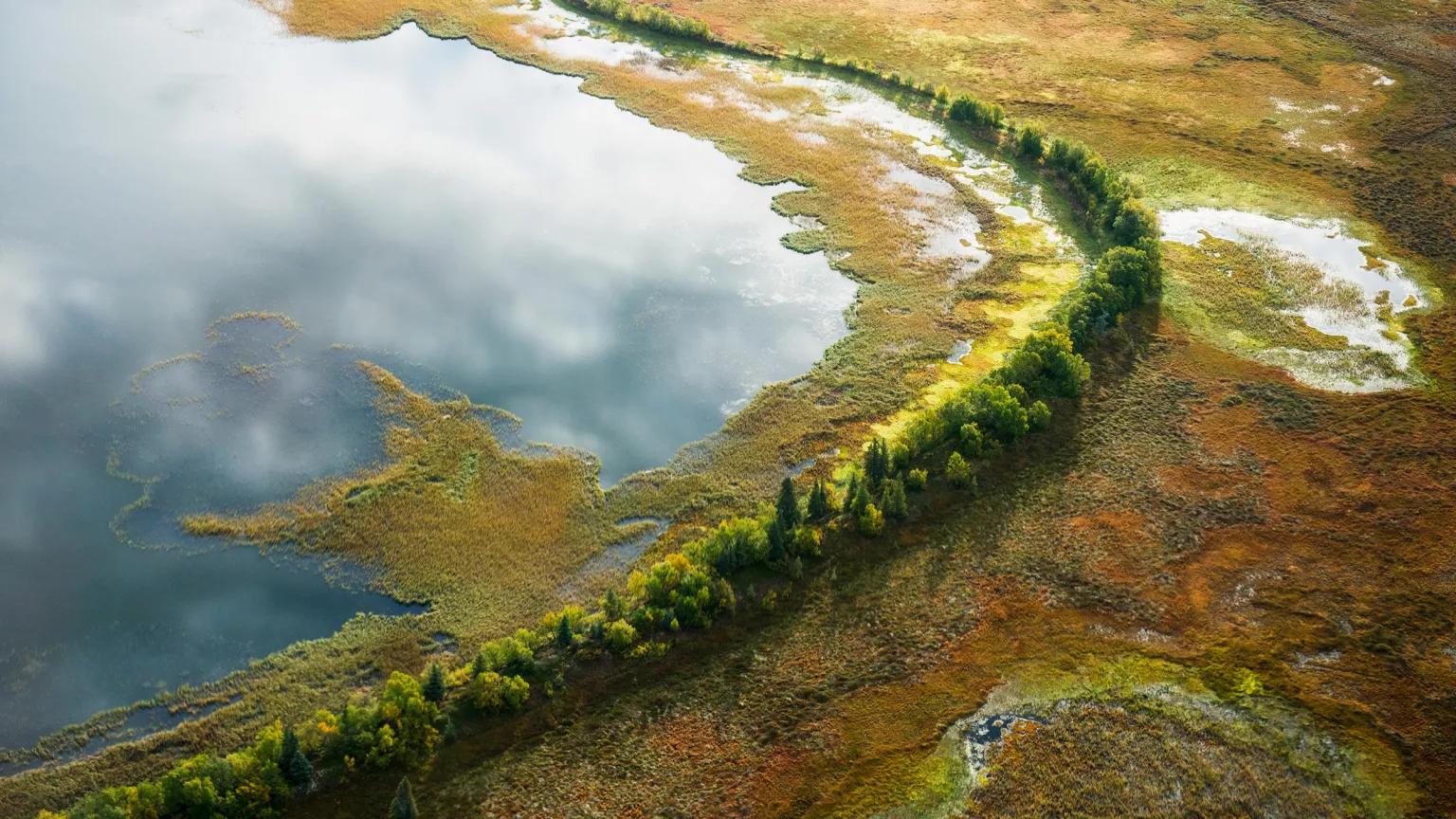
The Kvichak River, Bristol Bay
Carl Johnson/Alaska Stock via Alamy
The Bristol Bay region, in southwestern Alaska, is a mix of wild tundra and wetlands, with 40,000 square miles of pristine rivers and lakes and thousands of intact headwaters streams that sustain the world’s greatest wild salmon fishery. For close to two decades, the prospect of a massive open-pit gold and copper mine in the area—about 200 miles from Anchorage and reachable only by air or water—has loomed large for the thousands who live and work there, threatening to decimate the fishery and the cultural traditions, economy, and ecosystems inextricably linked to it.
More than 80 percent of people in the region believe the mine poses a threat to its fisheries. Pete Andrew Jr., a commercial and subsistence fisherman based there, puts it bluntly: “If you could pick the ultimate worst place in the world to create a mine, this is the very spot.”
So when the U.S. Army Corps of Engineers denied a permit for the Pebble Mine this past November, it was cause for celebration, if a cautious one. It was the latest setback for the project—valued at $400 billion to $600 billion—since Northern Dynasty Minerals, a cash-starved, Canadian junior mining company, first acquired the rights to the Pebble deposit in 2001. Through the decades, with investors coming and going and presidential administrations changing, and even as the permit process now enters an appeal stage, Bristol Bay residents have remained determined to keep Pebble out.
“This is probably one of the most diverse coalitions you'll ever find in an environmental battle,” says NRDC’s Joel Reynolds, referring to the tribal members, commercial and recreational fishers, hunters, businesses, faith leaders, and nonprofit organizations that have united to stop Pebble.
The strategies they’ve used have been diverse as well. They’ve held community engagement events, advertised in national newspapers, and enlisted the support of major jewelry companies like Tiffany & Co., while also testifying at shareholder meetings of the project’s investors and meeting with the mining companies’ CEOs. Collectively, their efforts have led to the departure of Mitsubishi Corporation (2011), Anglo American (2013), Rio Tinto (2014), and First Quantum Minerals (2018) from the project’s rotating list of backers.
Simultaneously, they have worked together with NRDC to pressure the U.S. Environmental Protection Agency (EPA) to use its authority under the Clean Water Act to protect Bristol Bay. (Through Section 404(c) of the act, the EPA may prohibit, restrict, or deny permits if a project would have “unacceptable adverse effects” on the environment.)
Now, as advocates take note of Northern Dynasty’s increasingly desperate maneuvers to entice new investors—and welcome a new administration that is committed to conservation—they are fighting for permanent federal protections. The Call to Protect Bristol Bay has been jointly released by the United Tribes of Bristol Bay, Bristol Bay Native Association (BBNA), and the Bristol Bay Economic Development Corporation. NRDC and the Commercial Fishermen for Bristol Bay have written letters to EPA Administrator Michael Regan in support of this tribal-led call.
Taryn Kiekow Heimer, who, with Reynolds, leads the Pebble Mine work at NRDC, explains that the campaign is so much bigger than just fighting to stop a mine. “It’s been the honor of my lifetime to stand in solidarity with the Indigenous People and tribes and commercial fishermen of Bristol Bay,” she says. Below, just five of the Alaska Natives who have been doing that work.
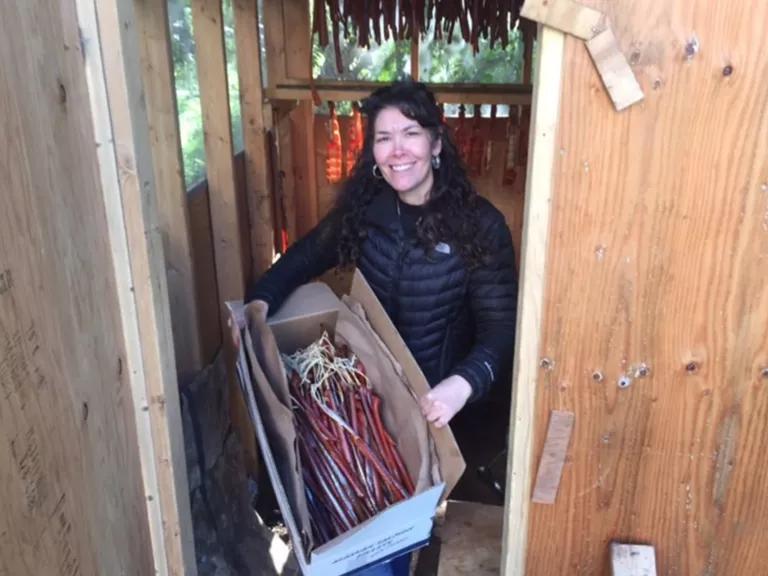
Gayla Hoseth with salmon strips in her smokehouse
Photo courtesy of Gayla Hoseth
Gayla Hoseth: From Granddaughter to Granddaughter
Gayla Hoseth learned subsistence fishing from her grandmother—how to set a net, how to properly clean and cut the fish, how long to brine the salmon strips. She learned the life cycle of the salmon and the importance of sharing one’s catch with family and friends. “A lot of the people here in Bristol Bay are givers, and we share our resources when it comes to our salmon,” she says. Hoseth, who will soon have a granddaughter of her own, looks forward to passing down these traditions as her grandmother did.
“The salmon are a part of our life and who we are as a people,” says Hoseth, who is a chief on the Curyung Tribal Council. “And that brings us together and connects us, not only for harvesting and gathering but now also for protecting that resource.”
The battle against the Pebble Mine has been a constant focus during Hoseth’s nine years working with the BBNA, which represents 31 tribes in the region. She has done outreach to tribal communities, educating them on the permitting process and on how to give impactful testimony. “One of the things I noticed over the years of many, many hearings is that our story never changes,” Hoseth says. “It’s about what's really important to us: the land, our culture, our subsistence way of life.”
And for the past two years, in her role as BBNA’s director of natural resources, Hoseth has worked to protect the region’s clean water and to ensure that the state and federal regulations imposed on Bristol Bay’s tribal communities recognize their subsistence fishing and traditional hunting practices.
She has also courageously brought her own testimony into meeting rooms in Toronto and Vancouver, Canada, to share a powerful message of resistance to the Pebble Mine from Bristol Bay. That included remarks before shareholders and board members of former project backer First Quantum Minerals in 2018. Hoseth’s comments there were part of an onslaught of opposition, one that ultimately helped lead the investor to ditch the project a month later.
But in the end, she reflects, Bristol Bay can speak for itself. “We are on our ancestral ground here and to have that connection is so powerful.” she says. “We're not only warriors; we are protectors of the land. And we aren't going anywhere.”
Pete Andrew Jr.: A Lifetime on the Water
This year, Pete Andrew Jr. is celebrating his 50th year as a commercial fisherman, a job he started on his older brother’s boat when he was just nine years old. It’s also turning out to be another massive sockeye salmon season, with more than 51 million fish predicted to return after a particularly cold and snowy winter.
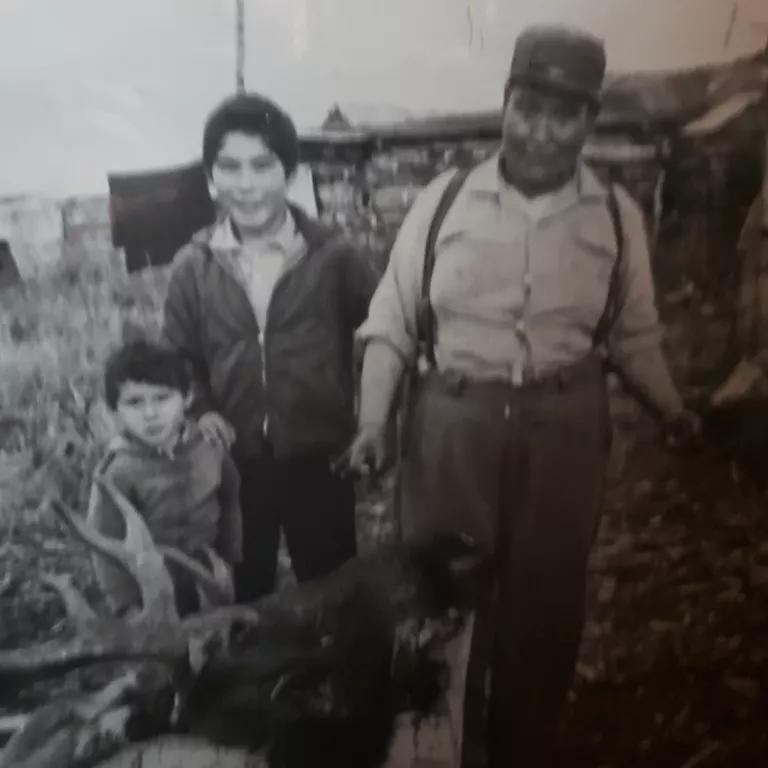
More than half of the world's wild sockeye supply comes from Bristol Bay. Underlying its bounty is a combination of factors that include the pristine nature of the region’s headwaters, an intact ecosystem, a lack of hatcheries, and the absence of industrialization—which has contributed to the decimation of fisheries in the Lower 48.
Andrew’s commercial fishing operation on Bristol Bay—an industry that generates an annual $2.2 billion and supports 15,000 jobs—allowed him to comfortably raise four children. He grew up in the small village of New Stuyahok, where his Yup’ik family led a subsistence lifestyle—hunting wildlife, fishing salmon, and gathering wild plants and berries for sustenance—which he still follows today.
Andrew remembers Yup’ik elders back in the mid-1980s discussing the potential for mining in the Bristol Bay region, not long before Cominco discovered the Pebble deposit at the headwaters of the Nushagak and Kvichak Rivers. In the decades since, Andrew, who currently sits on the board of Bristol Bay Native Corporation, has seen the threat from the proposed project grow—not just from the massive open-pit mine itself but also from the billions of tons of toxic waste it would produce, to be stored on-site in accident-prone tailings dams hundreds of feet tall. But along with the threat, a strong sense of unity against Pebble has also grown.
He remembers the anxiety after the 2016 presidential election. “We were scared that all the hard work we had put in place for the prior 10 years was in jeopardy,” Andrew says. “Of course, there were some rollbacks—and, oh gosh, it was looking not too bright. But we continued and we just kept hammering on.”
Andrew says that despite recent hopeful developments in Washington, D.C., residents are still worried, underscoring a need for permanent protections for Bristol Bay. “As long as that value is in that ground, people are going to want to come and get it,” he says of the gold and copper deposit. “But there's much more value that swims in these lakes and rivers that the whole world can enjoy in perpetuity.”
And he’s prepared to keep fighting: “As a little old Yup’ik guy from western Alaska looks at it, the ecosystem means so much to me and to my culture that it is worth everything I can do to stop it.”
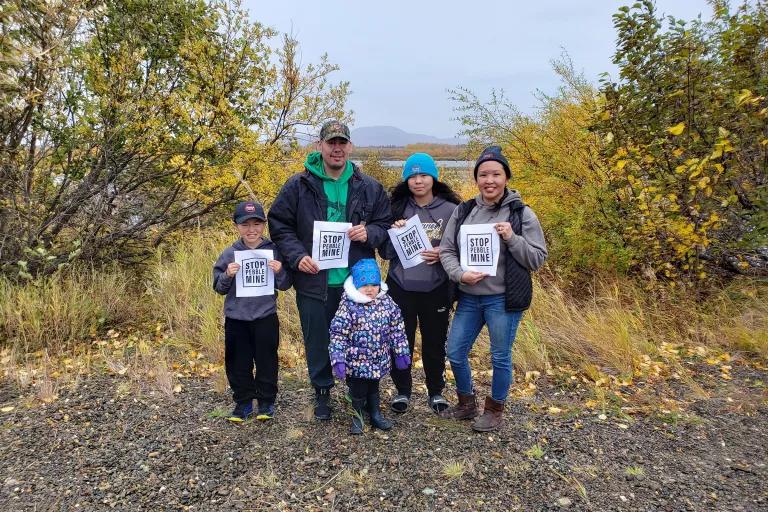
Delores Larson: Hunter, Gatherer, Fisher
Delores Larson is, first and foremost, a provider for her family. She’s a lifelong subsistence user and a proud hunter, gatherer, and fisherwoman. Larson, whose Yup’ik name is Myuuraq, and her husband support their three children, 13, 8, and 3, throughout the year with salmon, moose, caribou, wild plants, and berries.
“We consider ourselves rich Bristol Bay residents—not because of the money in our pockets but of the food in our freezers that we subsist off of all year long,” she says. “The river is our lifeblood; it is the source of all living things. With every season comes food on the table and that sense of security.”
Larson, who was raised in the 200-person Native village of Koliganek, the northernmost community in the Bristol Bay region, knew from the very beginning, a couple of years before she graduated high school in 2003, just how toxic the Pebble project would be for the area. “If you're going to pump billions of gallons of water out of the creeks and rivers, it’s common sense that it's going to dry up the land, and it's going to affect the fish that we subsist off of every year,” she says. The mine’s operation would remove at least an extra 35 billion gallons of water from the salmon habitat every year and would directly impact hundreds of miles of streams and thousands of acres of wetlands.
“I’ve always been very passionate about protecting my home,” she says, noting that Indigenous People have effectively stewarded the region’s lands and waters for millennia. “I always wanted to be involved in the fight against Pebble and speak out whenever possible.”
These days, Larson serves as community engagement director for the United Tribes of Bristol Bay, which represents 15 tribes in Bristol Bay and about 80 percent of the region’s population. Larson’s work is focused on encouraging tribal governments, municipalities, businesses, Native corporations, and individuals alike—throughout Alaska and the nation—to stand with the people of Bristol Bay and sign on to the Call to Protect Bristol Bay.
“We were all very relieved when the Pebble permit was denied, beyond happy that the immediate threat was gone,” Larson says. “But I am not letting my guard down because Pebble has come back from the dead many times.” She adds, however, that the president’s statement about Bristol Bay being no place for a mine is encouraging. “Hopefully, the Biden administration will pick up where President Obama left off and secure the lasting protections we’re asking for.”
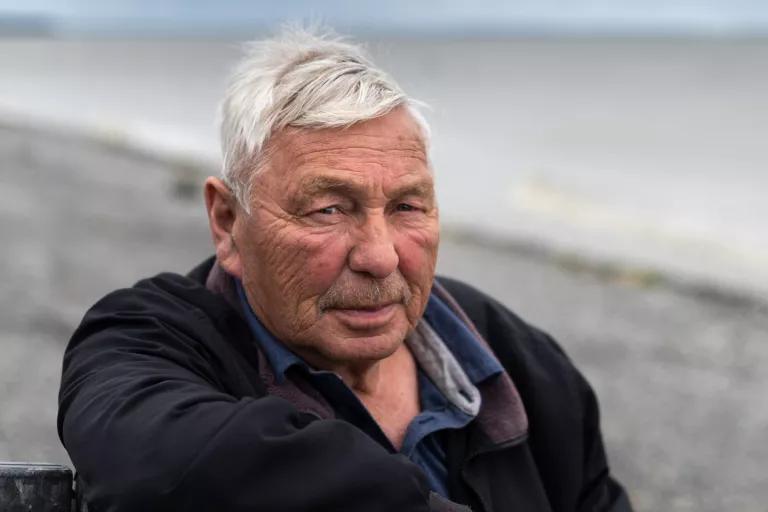
Robin Samuelsen: The Bay’s Ambassador
Two days before the Army Corps denied the Pebble Mine’s permit, Robin Samuelsen got a call tipping him off that something big would be coming down. He figured it had something to do with the mine but wasn’t sure what. “I was elated when I found out,” recalls Samuelsen, a commercial and subsistence fisher, who received the news as a long-awaited validation of his nearly two decades of resistance efforts.
“My gut tells me we’re in pretty good shape—it’s just a matter of time,” says the lifelong resident of Dillingham, Bristol Bay’s economic and transportation hub and a home for roughly 2,300 residents. He indicates that, if warranted, he’d be willing to meet with President Biden to share the wonders of Bristol Bay and the dangers of the Pebble Mine. Samuelsen, a Curyung tribal chief and the board chairman and former CEO of Bristol Bay Economic Development Corporation, did just that when he guided former President Obama around the area in 2015. He remembers the president’s words to him following a White House dinner, where he presented him with a gift of three cases of Bristol Bay sockeye fillets. “Robin, he told me, these are the best of the best,” Samuelsen says.
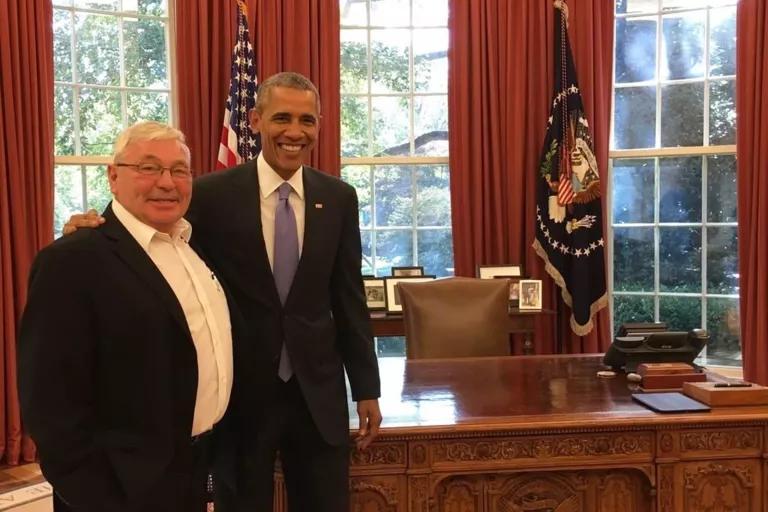
From the beginning, Samuelsen ensured that Alaska Natives shaped the fight against Pebble. He remembers ending a meeting with a coalition of Alaska-based conservation groups after five minutes when they couldn’t promise to let the word on Pebble come from Bristol Bay. “I thought it was very important that we were recognized right up front that we were fighting for our way of life, a way of life that has always been and that we continue today,” Samuelsen says. They invited him back to Anchorage a month later, and they’ve been working as partners since. “I attribute a lot of what happened between then and now to the good folks we're working with. We are all making a difference.”
Samuelsen is more determined than ever to stop Pebble: He knows that if the developers win, the infrastructure they’ll develop—hundreds of miles of roads and a massive power plant, for example—would effectively spark a new gold rush. More than a dozen other mining claims would become economically feasible, and the region could soon be transformed into an industrial mining district.
While he stands ready to protect his Bristol Bay home at any cost, Samuelsen acknowledges the battle can feel draining. “I am so tired of Pebble, it isn’t even funny,” he says.
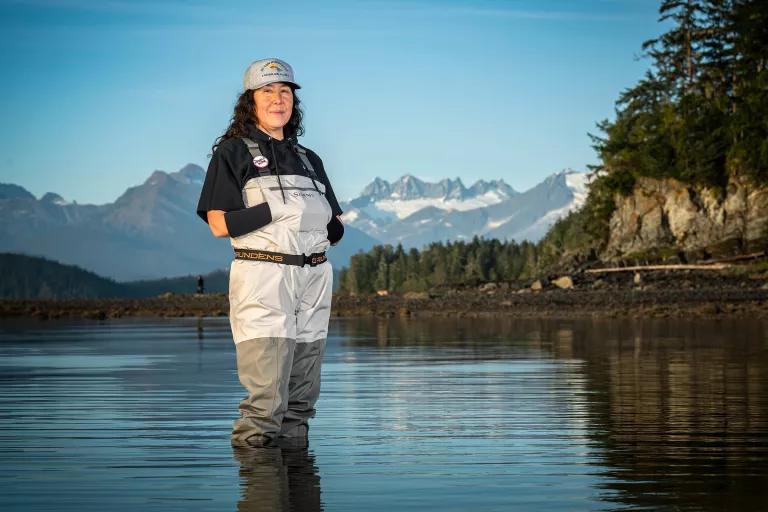
Melanie Brown: A Marathoner’s Mindset
Melanie Brown was born into a fishing family. Although she jokes that she didn’t have much choice in whether to follow in their footsteps, she says she took to fishing naturally as a child. To this day, Brown, a fourth-generation Yup’ik and Inupiaq commercial fisher, still returns to the site her great-grandfather staked out on the Naknek River, near her mother’s childhood home. There are only three summers she recalls not being out on the water—the two when she was pregnant (her kids, now 19 and 13, crew on her boat) and then again last year, due to COVID restrictions set by the year-round Bristol Bay residents (Brown resides in Juneau during the salmon off-season).
The current pandemic, she says, “reverberated and echoed the great death that happened a century ago,” referring to the 1918 flu that wiped out up to 40 percent of Bristol Bay’s adult population, one of the highest mortality rates in the world. “It's one of those old ruins that was reawakened in our psyches.” She says the abundance of salmon in the region helped those left behind survive. “We owe a huge debt of gratitude to the salmon,” she says.
These days, she seeks to repay that debt as part of her work as an organizer with the local nonprofit Salmon State. Among others, Brown and her colleagues have partnered with the food sector to feature salmon dishes at catered events in an effort to “speak to people through their taste buds,” she says. “It really helps people to connect all of the dots between this life force that exists in Bristol Bay. Eating is a great way to make light bulbs go off in people's minds when they get to directly connect with Bristol Bay salmon.”
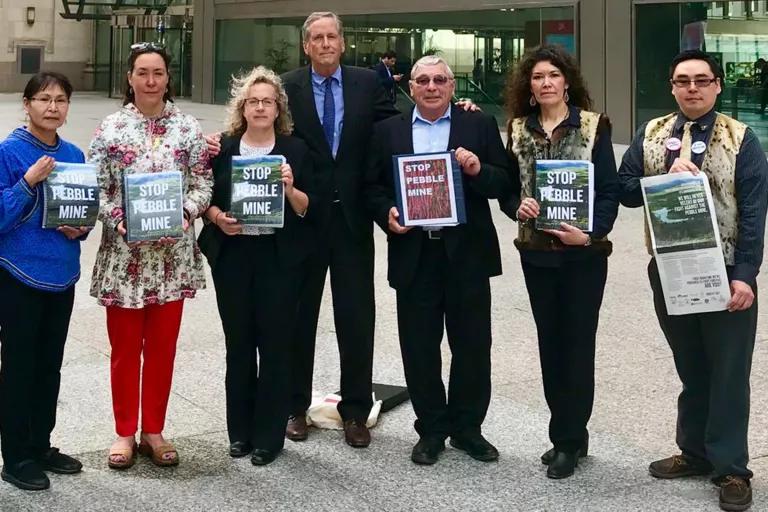
Over the past year, Brown has reflected that both the COVID-19 pandemic and her environmental advocacy—she also attended the First Quantum shareholders’ meeting in 2018 alongside Hoseth and Samuelsen—require a long-distance runner’s mindset. “This is a long-haul kind of thing, and that's the mindset that anybody who's been working on this Pebble fight has had to have,” she says, adding that the pandemic has allowed space to reaffirm her values. “It's been hard in a lot of ways, but it’s also been a time to really soul-search and develop a better understanding of what is really most important and the kind of world we want to live in.”
This NRDC.org story is available for online republication by news media outlets or nonprofits under these conditions: The writer(s) must be credited with a byline; you must note prominently that the story was originally published by NRDC.org and link to the original; the story cannot be edited (beyond simple things such as grammar); you can’t resell the story in any form or grant republishing rights to other outlets; you can’t republish our material wholesale or automatically—you need to select stories individually; you can’t republish the photos or graphics on our site without specific permission; you should drop us a note to let us know when you’ve used one of our stories.

Five Indigenous Poets Explore Loss and Love of their Native Lands
Deb Haaland Is the Interior Secretary Our Country Needs
In Oklahoma, “Yet Another Broken Promise” to Native Americans